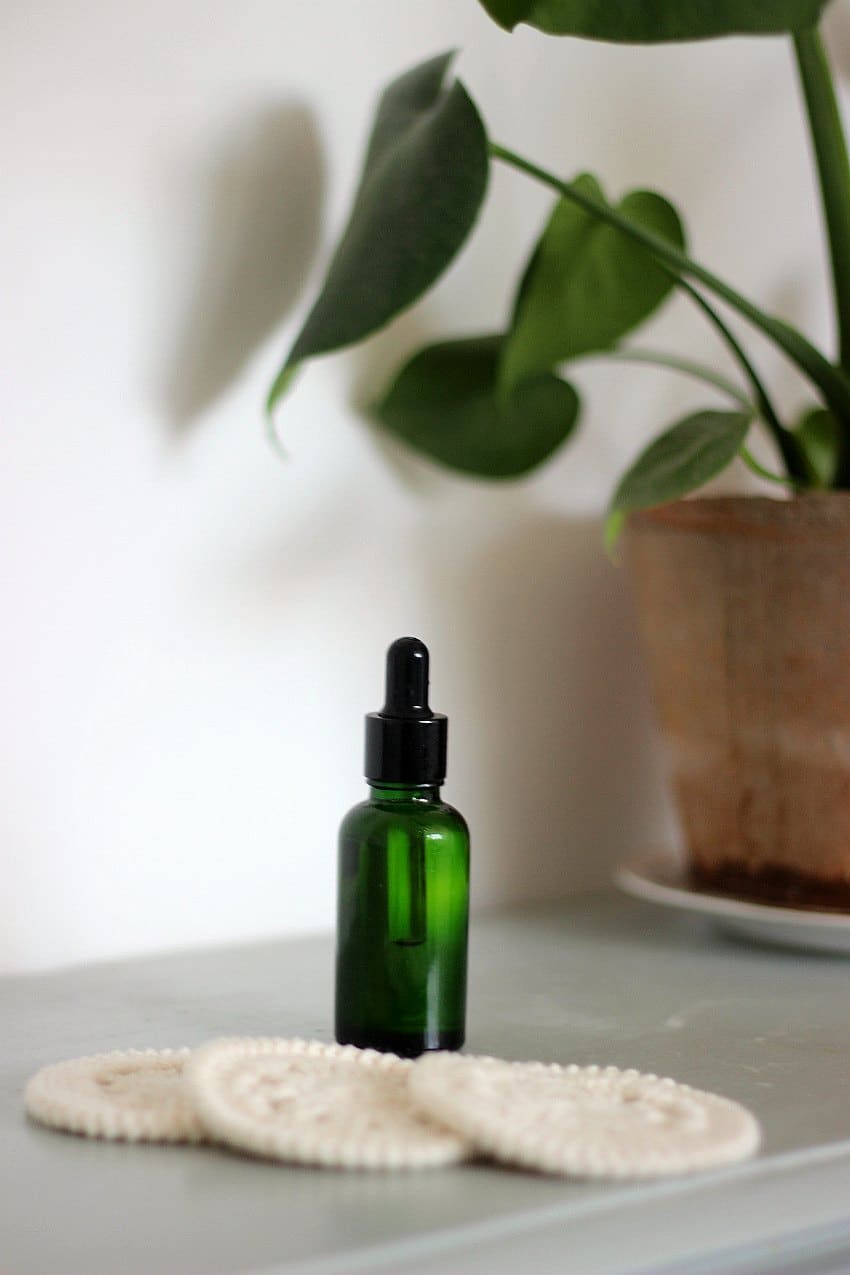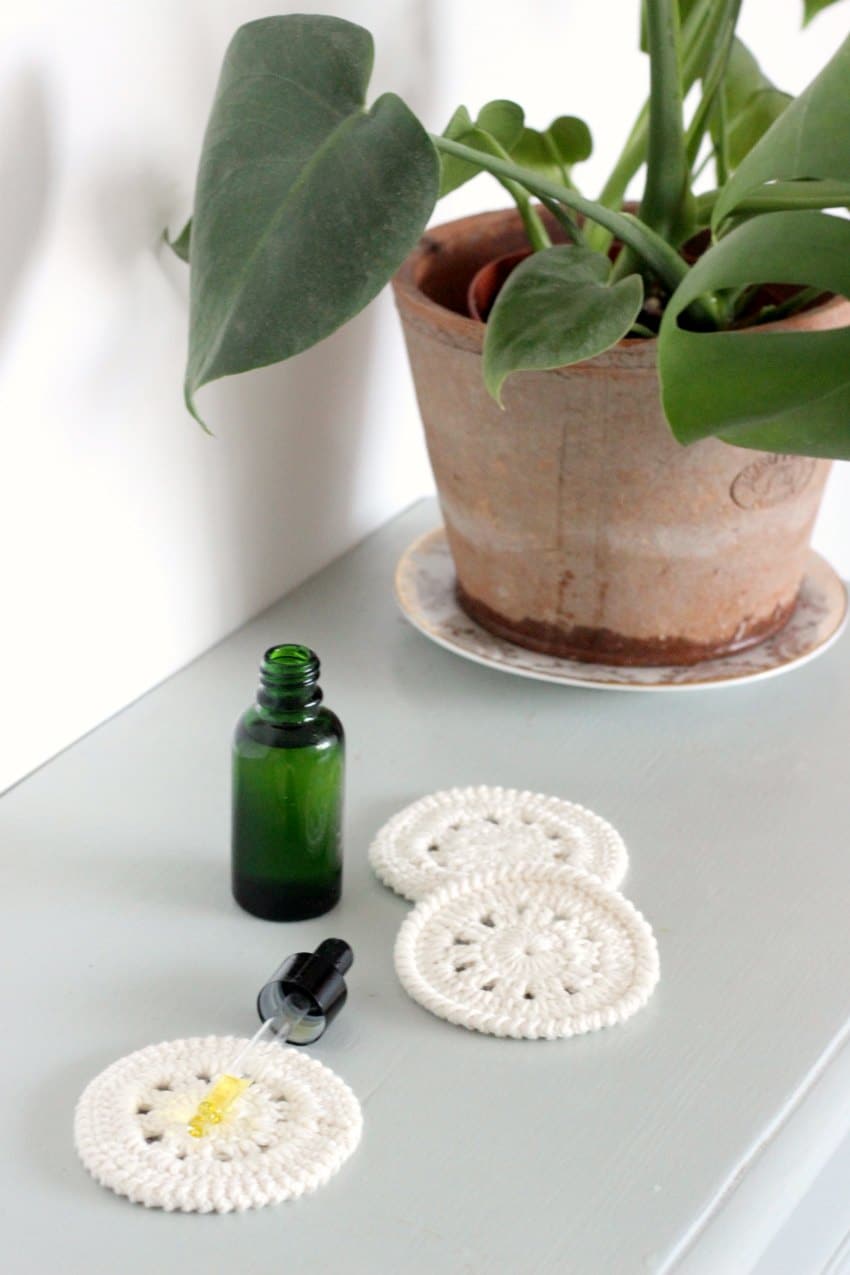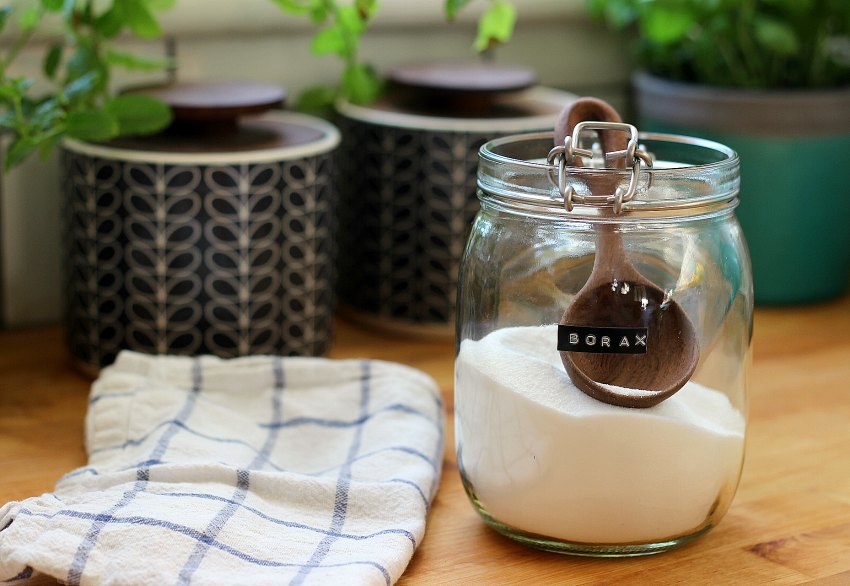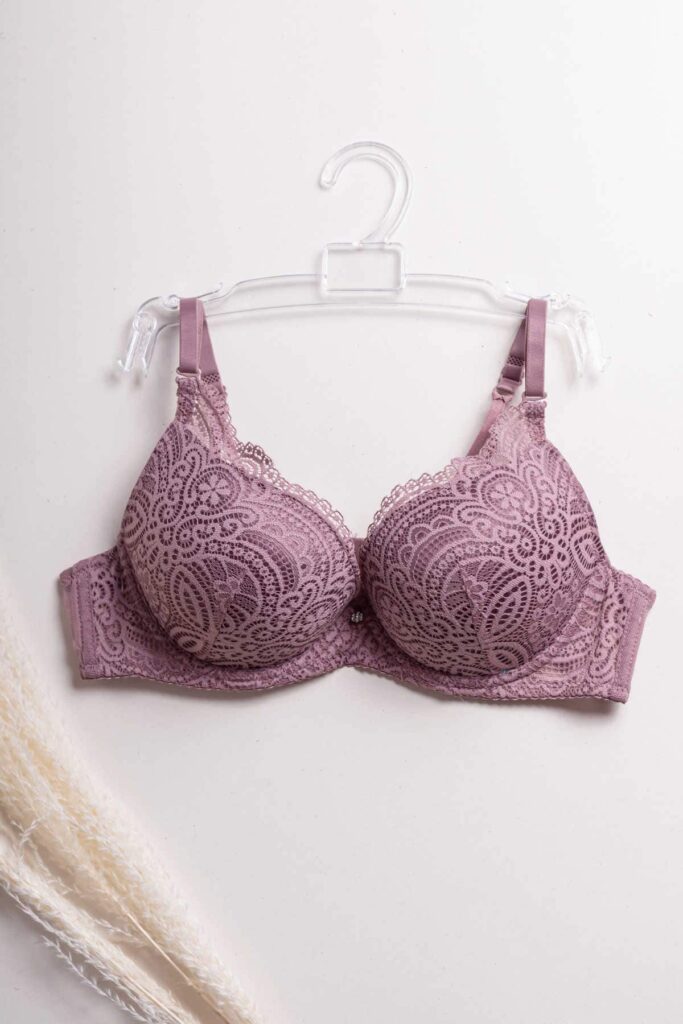How To Make Your Own Natural Face Oil
To support the running costs of Moral Fibres, this post may contain affiliate links. This means Moral Fibres may earn a small commission, at no extra cost to readers, on items purchased through these links.
Learn how to make your own natural face oil – with just two simple ingredients – for a plastic-free moisturisation boost.
Last year I bought a very nice, but a little bit pricey, bottle of face oil. I had never used a facial oil before to moisturise my skin. Whilst I had only heard good things about the stuff, it still felt wrong to use oil on my skin. Skin that had been prone to oiliness in my younger years. Within days, I realised that I needn’t worry. Facial oil is, in fact, a wondrous thing – and my skin felt amazing. It felt soft and moisturised, but not greasy, as I feared it might be.
I’ve been thinking a lot about homemade beauty products lately. So rather than replacing the bottle when it ran out, I started to think how hard could it be to make your own homemade face oil. And guess what – that idea stuck. It turns out it’s not at all hard – it’s just a case of mixing two ingredients together. You could even skip one of the ingredients if you wanted to.

I’ve been trialling my own homemade face oil over the last couple of months, and I am beyond happy with its performance, despite the simplistic natural ingredients. I feel a little silly calling it a recipe when it’s just two ingredients but who says the best things have to be complicated?
Table of Contents
How To Make Natural Face Oil
Here’s everything you need to make your own plastic-free, natural and non-toxic facial oil:
Ingredients
- A 30 ml coloured glass bottle with a dropper
- 30 ml jojoba oil
- 10 drops of rose geranium essential oil
Instructions
- To the clean dry glass bottle, add the jojoba oil. You may need a funnel for this to avoid spillage.
- Now add 10 drops of the rose geranium oil, and shake well to mix. That’s it: you’re done!
How to Use Homemade Facial Oil

Use your natural face oil instead of moisturiser, or use it as a moisturising boost under your regular moisturiser. After cleansing, simply dispense 3 or 4 drops of oil onto the palm of your hand and massage gently into your face, taking particular care around the eye area. Don’t add more than the recommended drops as you will find yourself with an oily face!
Notes On Ingredients Used
Jojoba oil is, despite the name, is not actually an oil, but in fact a liquid wax. Richly moisturising, it’s great for acne, psoriasis, sunburn, and chapped skin.
One bottle of jojoba oil will make a lot of natural face oil, so it’s rather an economical purchase. You can also use jojoba oil in some of my homemade cleaning products. It’s not often that you can say you raided your cleaning cupboard for your beauty needs!
Rose geranium essential oil, as well as smelling lovely, has many reported benefits for your skin. It’s reported to help with oily and congested skin, and may also help with eczema, broken capillaries, and dermatitis.
Of course, you can leave the rose geranium essential oil out if you prefer an unscented moisturiser. Alternatively, you could swap it for any other kind of essential oil that you prefer. Tea tree essential oil, for example, would be good for acne-prone skin. I’d encourage you to explore the world of essential oils to see what might work best for your particular skin concerns.
One word of caution though – do your research first before selecting your essential oil. Some essential oils are what’s known as phototoxic. This means that these certain essential oils will react with the sun’s UV rays and can cause an inflammatory reaction in your skin. Most citrus-based essential oils can be phototoxic – for example, bergamot or grapefruit essential oil. If you’re keen to find out more, then this article is a good starting point for your research.
What Is the Shelf Life?
Your natural face oil will expire when the shortest-dated ingredient you use expires. So, for example, if you use jojoba oil that has an expiry date of June 2029 and essential oil that has an expiry date of November 2028, it will generally be good to use until November 2028, because that’s when the shortest-dated ingredient (in this case, the essential oil) expires.
Jojoba oil is a rather wonderful thing. As jojoba oil is a liquid wax it has an exceptionally long shelf life and can probably store for around five years. Essential oils also have a long shelf life and can store anywhere between two to five years when stored properly.
I recommend using a coloured glass bottle as this stops sunlight from causing the essential oil to deteriorate. If you only have a clear glass bottle make sure you store it someplace dark when you’re not using your homemade facial oil.
In short, your homemade facial oil will store for a long time – but you will probably use it up long before it goes rancid. However, as with all handmade products, if it ever starts looking or smelling a bit funny, then it’s probably past its best.
If I’ve inspired you to get making, then I’d love to hear how you get on! Do share in the comments below.
PS: You can find similar reusable cleansing pads here or you can make your own cotton pads!
Found this post useful? Please consider buying me a virtual coffee to help support the site’s running costs.




